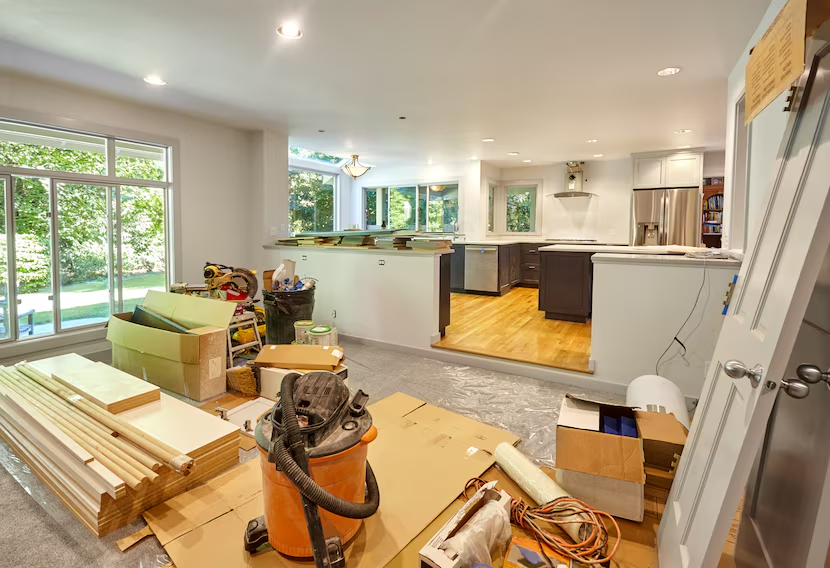Home remodeling can be one of the most exciting yet daunting projects a homeowner undertakes. From envisioning new spaces to finally stepping into a transformed home, the process is filled with anticipation. However, it’s also riddled with opportunities for mistakes that can derail budgets, extend timelines, or result in long-term dissatisfaction. If you’re planning a home upgrade and looking for guidance on style and functionality, working with an expert in interior design Ontario can help you make informed choices right from the start.
Before you swing the first hammer or pick out paint swatches, understanding common remodeling mistakes can save you stress, time, and money. Let’s take a deeper look at what to avoid.
1. Underestimating the Budget and Timeline
One of the most frequent missteps in home remodeling is misjudging how much time and money the project will require. Homeowners often create overly optimistic budgets and schedules, only to face surprise expenses or delays that could have been anticipated.
Budget Blind Spots
Costs can snowball quickly, especially if you discover structural issues, outdated wiring, or plumbing that needs replacement. Additionally, material and labor costs can fluctuate depending on availability and seasonality.
What to do instead: Always include a 10-20% contingency buffer in your budget. Plan for unexpected costs and prioritize spending on structural upgrades or layout improvements before cosmetic elements.
Timeline Delusions
While it might seem feasible to remodel your kitchen in a month, hidden issues or permit delays can stretch that into three months or more.
What to do instead: Work with contractors to develop realistic timelines that include wiggle room for potential setbacks. Communicate clearly about deadlines and order materials well in advance.
2. Ignoring Functionality in Favor of Aesthetics
Many homeowners fall into the trap of prioritizing visual appeal over practical usability. While beautiful designs are important, they should never come at the cost of comfort or functionality.
Looks Over Logic
A sleek, modern kitchen may look great in photos, but if it lacks adequate storage or counter space, it can quickly become frustrating to use.
What to do instead: Think about how you use each space daily. Ensure your remodel supports real-life needs like traffic flow, storage, lighting, and accessibility. Consulting an interior designer can help strike the right balance between form and function.
Open Concept Overload
While open floor plans are trendy, they can also eliminate useful walls, reduce privacy, and create noise challenges.
What to do instead: If considering an open layout, strategically preserve certain walls or use smart dividers like shelving or glass partitions to maintain flexibility and acoustic control.
3. Skipping the Planning Phase
Eagerness to start remodeling can lead to jumping into construction without a solid plan. However, failure to fully map out the project can lead to poor results and costly redos.
Design Drift
Without a clear plan, homeowners often make decisions on the fly, leading to inconsistent styles or mismatched materials.
What to do instead: Develop a comprehensive remodeling plan, including floor layouts, material selections, lighting plans, and a color palette. Tools like digital renderings or mood boards can help visualize the final look.
Permit Problems
Unpermitted work might save time initially but can come back to haunt you when selling the house or during inspections.
What to do instead: Check with your local municipality about what permits are required and secure them before starting. Ensure contractors are licensed and understand local building codes.
4. Choosing the Wrong Contractors or DIY-ing Too Much
Your home remodel is only as good as the people executing it. Cutting corners by hiring the cheapest contractor or taking on more than you can handle often ends in regret.
Contractor Confusion
Not all contractors are created equal. Some may lack experience with your type of project or fail to communicate effectively.
What to do instead: Vet multiple contractors, ask for references, and read reviews. Ensure they are bonded, insured, and offer a clear contract with payment terms and timelines.
The DIY Trap
While DIY can save money, some tasks—like electrical work, plumbing, or structural changes—require professional expertise.
What to do instead: Be honest about your skill level. Tackle small projects like painting or minor installations, but leave complex work to the pros to avoid safety hazards and rework.
5. Overlooking Lighting and Ventilation
Poor lighting and airflow are often afterthoughts in home remodeling, but they dramatically impact comfort, energy efficiency, and even resale value.
Dim and Gloomy Spaces
Even the most stylish room can feel unwelcoming without proper lighting.
What to do instead: Incorporate layers of lighting—ambient, task, and accent—to enhance functionality and mood. Use natural light where possible through well-placed windows or skylights.
Stuffy and Stale Air
Ignoring ventilation can lead to moisture buildup, mold, and poor indoor air quality, especially in bathrooms and kitchens.
What to do instead: Install proper exhaust fans and consider energy-efficient HVAC upgrades. Factor in operable windows to allow for fresh air circulation.
Making Smart Choices for a Successful Remodel
Avoiding these common mistakes requires careful planning, informed decisions, and a willingness to prioritize function along with style. A successful remodel doesn’t just look good—it feels good to live in every day. Whether you’re renovating a single room or the entire house, thoughtful preparation and collaboration with design professionals can make all the difference.
By focusing on both the big picture and the small details, you set yourself up for a home that meets your needs today and adds value for tomorrow.



































